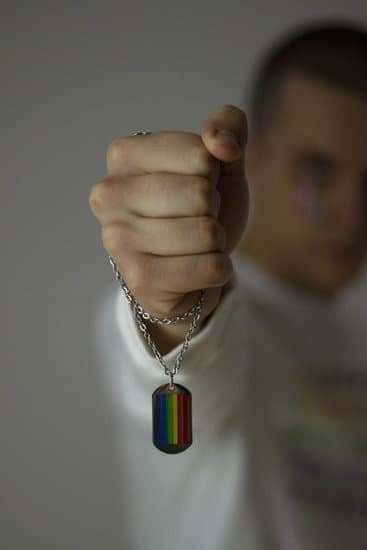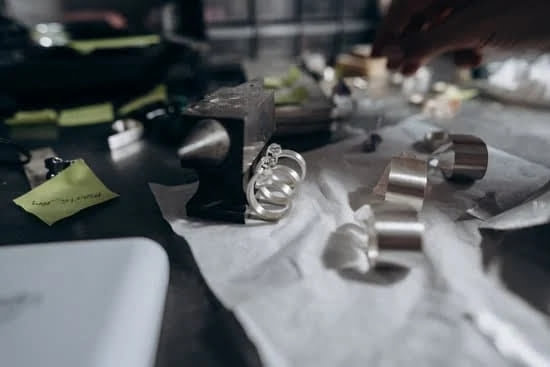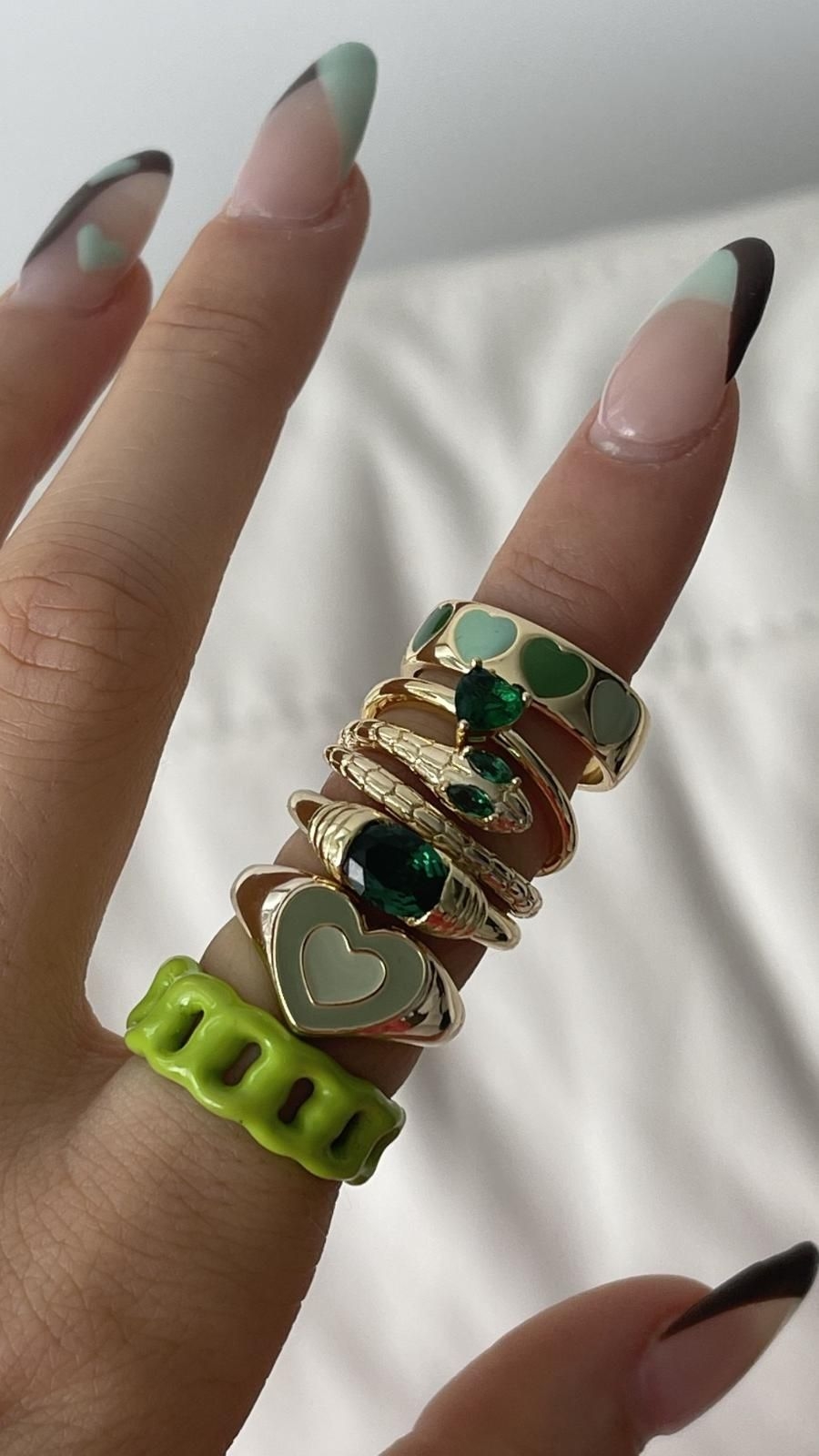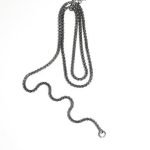Jewelry material in the 20’s was an integral part to the culture and style of the era, often showcasing opulence and glamor. This decade saw a surge in popularity for baubles and trinkets as women sought out bolder and more flamboyant styles for everyday wear. From elegant pearl necklaces to lavish diamond encrusted bracelets, jewelry was essential to creating a perfect look and gaining attention from admirers.
One of the most popular jewelry materials in the 20’s were pearls, which had been popular amongst aristocratic families for many generations before. Women from all walks of life adorned themselves with single strands of flawlessly matched pearls, multiple strands or shapes such as brooches, or even rings covered with iridescent pearl cabochons.
Other popular materials included semiprecious stones like jade and coral, both of which were considered attractive add-ons to any collection. These two were often seen set into gold filigree mounts with ornate engravings.
In addition to rare natural gems, jewelers began using synthetic gems such as paste glass stones that mimicked diamonds and sapphires to provide customers a way to get the same look at a fraction of the cost. Low-cost gold plating also allowed those with less money access to fashionable jewelry options too. These advances in technology allowed almost everyone access some kind of sparkly bauble or gemstone set piece regardless of their income level during this era.
The overwhelming presence of eye-catching jewelry during this time created an atmosphere where people could express individual style in addition to comfort through fashion choices available due to new production techniques advancing throughout culture around them. Jewelry from this time period continues to be appreciated today as memorable pieces that mix classic elegance with glitzy flair for a timeless appeal that remains relevant even in modern days.
Whats Old is New Again
In the 1920s, jewelry materials were typically precious metals such as gold and platinum, combined with precious or semi-precious gems. The Art Deco style was becoming very popular, a style which focused on geometric shapes and extravagant motifs. Along with diamond necklaces, earrings, and bracelets, finger rings were one of the most common jewelry pieces of this era. These designs favored symmetry and structure, so these bold patterns quickly rose to prominence in the world of fashion.
The most sought after materials used for this jewelry tended to be yellow gold and diamond accents; rope designs became the signature look during the roaring 1920s. Other popular accents for these art deco stylings included brightly colored enamels like green jade and maise yellow that contrasted nicely with the sturdy metals being used as well as luxury sapphires and rubies.
Platinum was an especially rare material at that time since it lacks many impurities found in other types of gold making it much harder to find.
Textured metals were also very popular in this era due to their special appearances and intricate detailing. We saw gothic motifs running rampant around this time including crosses with Celtic elements along with chunky amulets featuring dragons or knot works symbolizing infinity – all offering a unique take on the decade’s high-class chicness associated with wealth and status.
Overall there was something special about every piece crafted from any kind of material that made owning one in your collection even more grandiose during this decade full of extravagant lifestyles amongst its elite crowd.
Popular Materials of the Time
The first thing that comes to mind when one thinks of jewelry material in the 20’s is the rich image of platinum, gold, and silver. As a reflection of the roaring twenties, there was an appreciation for finery and elegance.
These materials lent themselves well to creating ornate, fine jewelry with unique designs and intricate details. Perhaps the most iconic type of jewelry crafted during this time period were Art Deco pieces that made use of bands studded with square cut diamonds or design features associated with movements like Constructivism.
When it came to diamond pieces in particular, platinum was favoured for its ability to bring out the brilliance of gemstones, especially large center stones such as emeralds or sapphires. Jewelers from that era took great care to craft bold and daring rings using multiple metals to create stunning contrast between gold, silver and platinum.
At the same time, Rose gold began gaining popularity due to its romantic hue which is perfect for feminine statement pieces or engagement rings as it flatters any skin tone amazingly well.
Other metals also saw their time in fashion throughout the 1920s such as nickel alloys. These were quite popular due to their malleability which allowed them to be created into delicate filigree styles, engravings etchings all over the surface of coins or amulets while still being highly affordable compared to other jewelry materials at that time such as silver or platinum.
This type of metal also had a tendency toward tarnishing which only added further character and charm to many timeless pieces created during this period.
Jaw Dropping Craftsmanship Quality of the 1920s
The 1920s were a time characterized by opulence, indulgence and grandeur, and jewelry from the era follows suit. Jewelers of the time crafted intricate pieces inspired by Art Deco, that featured gemstones in diamond, platinum or white gold. These glittering embellishments of the Jazz Age exuded extravagance, with designs ranging from filigree styles featuring a wealth of precious stones to elegant three-stone rings with tapered baguettes. Moreover, many pieces included dizzying detail like milgrain edging or even enamel accents.
The quality of craftsmanship during this era was spectacular and authentic pieces have endured countless generations remaining utterly timeless. This is due to the time and thought placed into each design as jewelers painstakingly handcrafted every piece adhering to extremely high standards.
Incredibly detailed work was regularly performed using tools such as tweezers for setting gemstones or burnishers for turning out consistent edgework requiring extreme hand-eye coordination. Even more complex patterns featuring designs of chevrons and stars exist today that demonstrate the level of expertise achieved in those years gone by.
Paramont among these well-crafted garments was Edwardian Jewelry which was popularized in England during the early 20’s making its way across Europe and ultimately North America shortly thereafter. This style of jewelry represents innovative yet simple designs featuring intricate filigree work set atop a range of metals which captures hushed beauty filled with sweet sentiment meaning an illustrious time past still lives on to this day.
Celebrity Influence
The twenties were an unmistakably intriguing era with its impact on fashion, literature and entertainment. As the roaring decade roared on, attendees of the new wave of social gatherings sought to make a statement. They favored stylish and daring accessories to compliment their bold clothing trends; this laid the groundwork for costume jewelry–the now accepted term used to refer to fashion jewelry depending mostly on materials other than precious metals and gemstones.
Costume jewelry’s popularity grew due in large part to increased exposure through celebrity influence. Entertainers such as Josephine Baker had a huge influence in spurring demand from women around the world who wanted to imitate her look. Her television appearances generated a great deal of attention and elevated the importance of embellishing outfits with fancy costume jewels.
Socialites adopted similar pieces for big events such as galas and premieres, contributing further to its mainstream acceptance. Dazzling headbands or tiaras, intricate earrings and over-sized necklaces could be found at any event, gleaming under bright ballroom lights as party-goers mirrored iconic celebrities like Marilyn Monroe and Audrey Hepburn on their way out onto the dance floor.
The selection of materials utilized in creating these trendsetting accessories is incredibly varied. Many pieces included imitation stones which were sold alongside crystal beads, plastics, woods and metals like copper, aluminum or brass which were often gilded with gold or silver plating. Pearls – both real, imitation or glass – featured heavily in all sorts of costume trinkets; even Cameo brooches made waves during this sparkling era.
Although not without fault (due mostly to changing technologies), production processes employed during this time produced lasting pieces that are still very much appreciated by collectors today who seek out original designs with history behind them. This level of craftsmanship has created vintage costumes that resist heat temperature fluctuations far better than modern counterparts available today on the market.
Nifty Novelty Beads and Charms Make a Comeback
In the 1920s jewelry exuded optimism and brought splashes of bright color to wardrobes. As with clothing and other accessories, jewelry went through many changes over the course of the decade. One of the biggest trends during that time was novelty beads; in every shape and size, big and small. Whether purchased from a local boutique or made at home, beads were extremely popular, adding texture and character to different pieces.
In addition to beads, charms were making a comeback again. They had been popular in centuries prior but had gone out of style before gaining a resurgence in popularity during the 20s.
These customized charms added a unique touch when added to necklaces or bracelets and could be personalized with initials or simple messages of love. Many people wore these charms as reminders of their lived ones, often giving them out as gifts or wearing several themselves as pendants on chains.
Precious metals like gold and silver were still used plenty in pieces ranging from elaborate Art Deco designs to minimalistic earrings featuring cut-out designs inspired by architecture. Gold plating had become popular as well, offering consumers a more budget-friendly alternative without skimping out on quality craftsmanship and appearance.
Pearls became fashionable for daywear as well due to their versatility; stringed onto necklaces or dangling from drop earrings, pearls could make any outfit look instantaneous classy no matter what season it was.
The High Fashion Demand for Customized Jewelry
In the 20s, jewelry was an accessory for both men and women. Jewelry was made from different types of materials such as crystals, metals, and plastics. The most sought-after designs were created from gold and platinum and could be quite expensive.
This type of jewelry had personalized features like engraving a name or creating charms with certain symbols. As a result of the fashion craze in the early 20’s, demand for customized jewelry increased dramatically. Jewelers quickly grew their businesses by becoming Adept at creating and designing unique pieces for trendy customers.
Jewelry that used synthetic materials became increasingly popular as people wanted to stand out in public but didn’t necessarily have the budget to purchase pricey pieces. These pieces also allowed wearers to add special touches like precious gems or metallic Patinals more freely than they would have with metal jewelry due to its more flexible nature.
This form of fashionable appeal led many individuals to mix the use of crystal, pearl, plastic and glass with metals like silver or gold in order to create beautiful pieces that wouldn’t break the bank account while still looking gorgeous on its owners.
The rise of Art Deco during this period brought some exciting changes to accessories such as earrings, necklaces, and rings made from Platinum, Markasites/ Onyx as well as toruqouise which all added glamour to people’s dressing style. In addition colorful flower beads were also widely used combined with turquoise for necklaces thereby providing exotic colorful combinations becoming very fashionable in the late 1920s. Such beads were available in blue color, white color red color ,green ,purple etc.
With pearls adding sparkle ,all these make it easier for personalizing fashion tastes.In addition certain motifs like sunburst eagles art deco pillars derived from Egyptian ancient designs also favored by many people who could wear them openly displaying their fashion flair. Overall this is an incredibly exciting period in terms of ornamentation customizing one’s own distinctive look through specific accessories was made possible within reasonable cost range.
The Timelessness of Jewelry from the 1920s
Jewelry in the 1920s was a sign of luxury, glamour and wealth. During this time period there were an array of beautiful and exquisite materials used to create these timeless pieces. The most popular jewelry materials used at this time were gold, platinum and silver.
Gold was associated with eternal life and immortality. Platinum was considered the most precious metal of all because its rarity made it exotic and desirable. Silver had diplomatic and social affinities, but also held value as a precious metal.
In addition to gold, platinum, and silver, jewelry from the 1920’s commonly featured gemstones such as diamonds, rubies, sapphires and emeralds. Diamonds were widely seen as a symbol of permanence, purity and strength due to their hardness – not just beauty but inner strength as well. Rubies held symbolic meanings of contentment, fidelity and love making them ideal for engagement rings or wedding bands during this era.
Sapphires symbolized wisdom, virtue and good fortune which helped make them another popular choice for engagement or wedding jewelry design. Emeralds being green represented health in many cultures during this time making them especially cherished gifts during weddings or other special circumstances.
Apart from these traditional materials used in jewelry design during the 1920’s there were also some more modern techniques that began popping up such as Art Deco styles with vibrant colored stones like moonstone accompanied by geometric shapes crafted in nanogold materials showcasing angular patterns rather than rounded ones featured before in traditional designs utilizing delicate curves.
All of these cultural influences combined to create remarkably timeless jewelry pieces unlikely anything any culture had ever seen before which are still appreciated today.

Welcome to my jewelry blog! My name is Sarah and I am the owner of this blog.
I love making jewelry and sharing my creations with others.
So whether you’re someone who loves wearing jewelry yourself or simply enjoys learning about it, be sure to check out my blog for insightful posts on everything related to this exciting topic!





